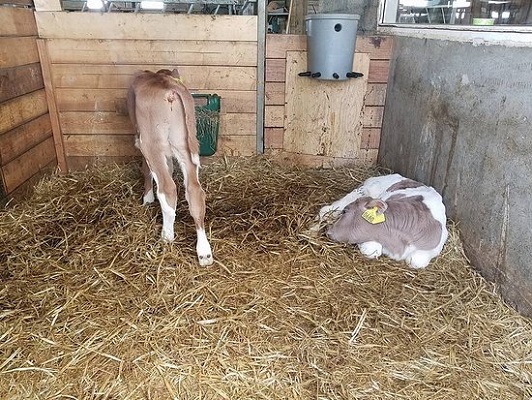

Calves reared in groups are more social, confident and show less fear than calves reared in single boxes or in isolation.
Early learning and increase in solid feed consumption, greater access to space and better social interaction elicit better welfare in group housed calves. Housing dairy calves in pairs rather than individually allows benefits such as increased space for movement and social opportunities with no disadvantages in health and weight gains.
Paired rather than individual housing during the milk-feeding stage also reduces calf responses to weaning and improves performance after weaning if calves are then housed in groups.
Calves raised with full social contact (either from birth or from 3 weeks of age) establish a stronger bond with their companion than do calves housed with limited contact . Individually housed calves spend less time suckling, feeding, exploring and moving. Calves seem to prefer a familiar calf to an unfamiliar calf, and the presence and familiarity of a companion calf affects the reaction to separation.
Group rearing may facilitate the start of eating and ruminating earlier than individual housing, resulting in calves gaining weight faster post-weaning than isolated calves. Group reared calves also tend to rank highest in the social hierarchy in post-weaning groups that include individually reared animals.
Housing calves in groups of under 10 calves has been shown to be preferable from a health and growth perspective, with lower levels of respiratory disease than that found in larger groups. Housing in small-group pens can result in lower mortality compared with single pens and large-group pens with automatic milk feeders.
Calves in larger groups are generally more active, displace other calves less frequently from the feed barrier and show increased proximity to other calves.
 Contact Jaguza Support
Contact Jaguza Support